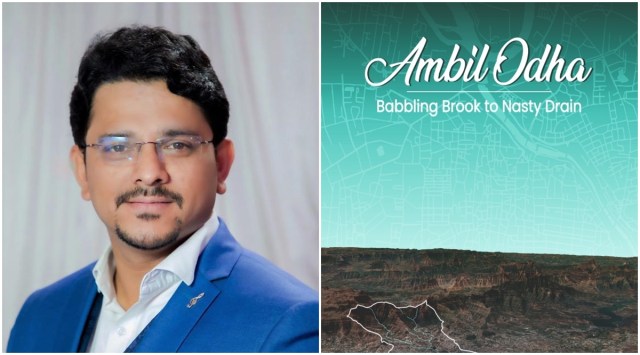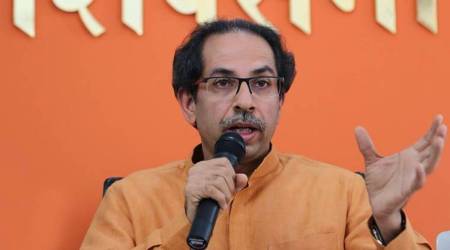Pune researchers take veil off this vanishing stream which flooded in 2019
Shrikant Gabale and Manjushri Parsnis have come up with a book to help policymakers understand the importance of Ambil Odha.
 For Gabale, 2019 was the tipping point — he felt his scientific knowledge must then be brought before the public and the policymakers. (Express)
For Gabale, 2019 was the tipping point — he felt his scientific knowledge must then be brought before the public and the policymakers. (Express) In 2019, 26 people lost their lives when Ambil Odha, the heavily encroached stream in Pune, flooded its banks. While it caught many unawares, researcher Shrikant Gabale had seen this coming years ago. Gabale, who holds a PhD in Urban Geomorphology, has been studying this natural water body for the last 10 years.
Now, along with another researcher Manjushri Parsnis, Gabale has come up with a book, ‘Ambli Odha’, which he said would help people and policymakers understand the importance of this tributary of the Mutha and the perils of its.
Originating in the hills of Katraj outside Pune, Ambil Odha, Gabale pointed out, is the result of many primary, secondary and tertiary streams joining together to form the mainstream. The Odha drains into the Mutha river, part of the larger Bhima river basin.
“Ambil Odha is the first major tributary of the Mutha river system. As Ambil Odha flows down the Katraj hills, many small tributaries drain, increasing its water volume. The smaller streams often dry out during the summer to reappear with much vigour during the monsoon,” he said.
However, Gabale pointed out that over the years, encroachment on primary and secondary streams, as well as the main waterbody of the Odha, has created a situation which was an open invitation for flash floods. “Thus, when the 2019 flash floods came, it was just a culmination of events which had been building up for years. Dumping of construction debris, garbage being emptied into the main river course construction on the main course of the river as well the vanishing primary and secondary streams all contributed to this,” he said.
For Gabale, 2019 was the tipping point — he felt his scientific knowledge must then be brought before the public and the policymakers. “Ambil Odha is just one of the many basin systems which define Pune. Change in land use and encroachment has reduced the once gargling stream of fresh water into a putrid body of water. But when the flash floods came in 2019, it was a wake-up call for citizens. Even now, people who live beside the Odha get scared at the slightest rains,” he said.
The book, Gabale said, is different from other academic writings. “Instead of just dwelling in the realms of geography, we went steps ahead and tried to analyse and translate how the changes in the river system have affected it and, in the long term, would affect people who stay along this Odha,” he said.
Other than citizens, the book, Gabale said, can be used by policymakers to understand the extent of destruction and the possible course correction that to prevent future floods.
“Urban flooding is a relatively new phenomenon and has to do with rampant growth without considering the ecological or environmental aspect of development. Our book tries to delve into many aspects about the Ambil Odha, and we hope it would serve as a ready reckoner to understand this complex subject well,” he said.




































